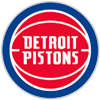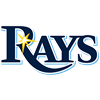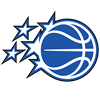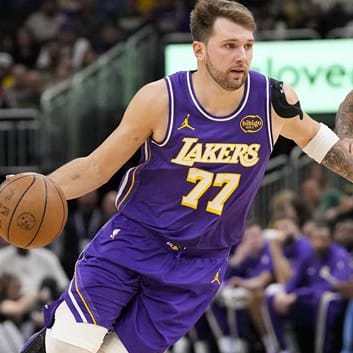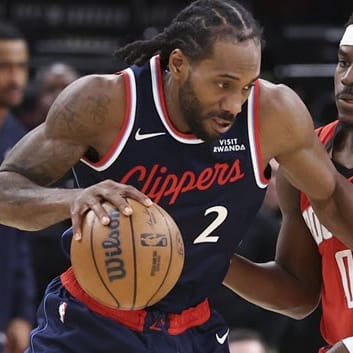Tiering is one of the most popular ways to prepare for a Fantasy basketball draft. Within each position group, separating players into tiers is an effective means of projecting general value and keeping organized during your draft. If you're in a position where you need to make a quick decision, consulting a set of tiers can help settle the debate between two players who are relatively close in value.
Fantasy Basketball Point Guard Tiers: Curry, Harden Lead the Way
Fantasy Basketball Small Forward Tiers: Where does Kawhi Leonard rank?
Entering the 2022-23 season, the NBA's talent pool is deeper than ever, so going into your drafts with a plan is more imperative than ever. Early on, drafting the top talents should be the priority, but as the draft progresses, it's important to be cognizant of which positions you're stocking up on and which you'll need to target in the mid-to-late rounds. Tiers can help achieve the roster balance most fantasy managers are hoping to come away with.
Here are our shooting guard tiers, which can serve as a general guide for those playing in standard leagues.
Tiers assume eight-category settings. Each player only appears in one set of tiers. Players are assigned to the position at which they're likely to play the most.
Fantasy Basketball Rankings: Jokic, Curry lead Top 150 for 2022-23 NBA Season
TIER 1
 Paul George, Clippers
Paul George, Clippers
George had trouble staying on the court again last season, appearing in only 31 games. He
Tiering is one of the most popular ways to prepare for a Fantasy basketball draft. Within each position group, separating players into tiers is an effective means of projecting general value and keeping organized during your draft. If you're in a position where you need to make a quick decision, consulting a set of tiers can help settle the debate between two players who are relatively close in value.
Fantasy Basketball Point Guard Tiers: Curry, Harden Lead the Way
Fantasy Basketball Small Forward Tiers: Where does Kawhi Leonard rank?
Entering the 2022-23 season, the NBA's talent pool is deeper than ever, so going into your drafts with a plan is more imperative than ever. Early on, drafting the top talents should be the priority, but as the draft progresses, it's important to be cognizant of which positions you're stocking up on and which you'll need to target in the mid-to-late rounds. Tiers can help achieve the roster balance most fantasy managers are hoping to come away with.
Here are our shooting guard tiers, which can serve as a general guide for those playing in standard leagues.
Tiers assume eight-category settings. Each player only appears in one set of tiers. Players are assigned to the position at which they're likely to play the most.
Fantasy Basketball Rankings: Jokic, Curry lead Top 150 for 2022-23 NBA Season
TIER 1
 Paul George, Clippers
Paul George, Clippers
George had trouble staying on the court again last season, appearing in only 31 games. He was great when available, however, averaging 24.3 points, 6.9 rebounds, a career-high 5.7 assists and 2.2 steals, which tied for a career high. However, his usage should dip a bit with Kawhi Leonard healthy this season. The Clippers also have plenty of offensive options and are arguably the deepest team in the league. Still, George's ability to produce two-way All-Star numbers puts him in Tier 1.
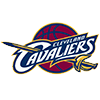 Donovan Mitchell, Jazz
Donovan Mitchell, Jazz
As the 18th-ranked player on a per-game basis in eight-category leagues, Mitchell was able to maintain his production from the previous season, putting up averages of 25.9 points, 5.3 assists, 4.2 rebounds and 3.5 triples while taking his steal numbers from 1.0 to 1.5. With the Jazz tanking, Mitchell could be in line for huge numbers as long as he remains on the team. However, a trade before the season seems likely. His value is fluid at the moment, but, either way, Mitchell has clear top-25 upside for this season.
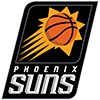 Devin Booker, Suns
Devin Booker, Suns
Booker is coming off his third straight All-Star appearance and first All-NBA selection (First Team). Last season, in 34.5 minutes per game, he averaged career highs in points (26.8), rebounds (5.0) and steals (1.1). As Chris Paul ages, Booker will likely take on more responsibilities, and he has room to improve since he's just 25 years old. Whether that manifests in more points or assists is unclear at this point, but we should see more from Booker this year than last. He ranked 21st in per-game fantasy production during 2021-22 – his fourth time in the top 25.
TIER 2
 Anthony Edwards, Timberwolves
Anthony Edwards, Timberwolves
Edwards made significant improvements during his second season. He increased his production defensively and as a passer, averaging 1.5 steals and 3.8 assists per game, and his true-shooting percentage (56.0%) also improved from his rookie year. Even with the addition of Rudy Gobert, Edwards and Karl-Anthony Towns are the clear driving forces behind the Timberwolves' offensive attack, and fantasy managers should expect Edwards to continue improving during his third season. He's on an All-Star trajectory and will probably be a consistent pick in the second and third rounds of most fantasy drafts.
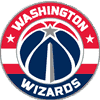 Bradley Beal, Wizards
Bradley Beal, Wizards
After averaging a career-high 31.3 points per game in 2020-21, Beal averaged just 23.2 points last year, and all of his shooting percentages dropped. He also sprained his wrist and needed surgery in February, keeping him out for the remainder of the campaign. Last season wasn't all bad – Beal reached a new career high for assists per game (6.6) -- but it's possible his value needs to be recalibrated. He'll still be the No. 1 option in Washington, though the team traded for Kristaps Porzingis at last year's deadline, and Kyle Kuzma showed some nice upside, so Beal won't have to save the offense every possession. Ultimately, Beal's role is one of the most secure in the league, so fantasy managers shouldn't panic about a potentially-fluky 2021-22 campaign.
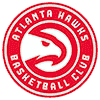 Dejounte Murray, Hawks
Dejounte Murray, Hawks
Murray became the team leader of a stripped-down Spurs team last season, averaging 21.1 points, 8.3 rebounds, 9.2 assists, 2.0 steals and 1.4 three-pointers per game. However, the Spurs decided to descend further into the basement of the Western Conference by shipping Murray to the Hawks. Murray now finds himself playing alongside a usage rate monster in Trae Young. It's fair to expect Murray to see a significant decline in his production, especially his assists without the ball in his hands as often. If fantasy managers draft him with the expectation that he can match the numbers that he produced with the Spurs, they will likely be disappointed.
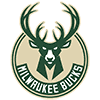 Khris Middleton, Bucks
Khris Middleton, Bucks
Middleton has been one of the most consistent players in the NBA over the past three seasons, and he's coming off his third All-Star game in four years. Nothing is expected to change on that front. He'll be option 2A with Jrue Holiday as 2B behind Giannis Antetokounmpo. The only thing fantasy managers need to be wary about is that Middleton tore a ligament in his wrist and underwent surgery in July. However, he's expected to be ready near the start of the regular season, so he shouldn't have a significant draft day discount.
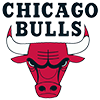 Zach LaVine, Bulls
Zach LaVine, Bulls
Lavine dealt with a nagging knee injury for much of the regular season. Due to the injury and the influx of talent around him, LaVine saw his scoring average drop to 24.4 points per game – three points lower than the previous season – and he was also less efficient. Still, it's difficult to complain about his production for fantasy, considering he also chipped in averages of 4.6 rebounds, 4.5 assists and 2.8 three-pointers.
LaVine underwent surgery to correct his knee issue, which should not prevent him from being ready for the beginning of the 2022-23 season. He's still worthy of an early selection in fantasy drafts, but he hasn't played more than 67 games in a season since 2015-16 when he was still on the Timberwolves.
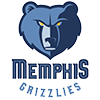 Desmond Bane, Grizzlies
Desmond Bane, Grizzlies
Bane assembled a breakout 2021-22 campaign and was one of the finalists for Most Improved Player. After demonstrating his upside as a shooter as a rookie, Bane took on an expanded offensive role, and his efficiency held firm. Altogether, his increased responsibilities resulted in 18.2 points on shooting splits of 46/44/90, which included 3.0 three-point makes per game. In addition, he tallied 4.4 rebounds, 2.7 assists and 1.2 steals in 29.8 minutes, making him one of the biggest fantasy sleepers.
After ranking 157th in per-game fantasy scoring as a rookie, Bane ascended to 29th last season. Expect Bane to maintain a similar role this year and, given his age (24) and evident importance to the team, it's fair to expect statistical improvement.
TIER 3
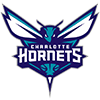 Terry Rozier, Hornets
Terry Rozier, Hornets
Rozier enters his fourth season in Charlotte coming off back-to-back stout offensive campaigns. He's recorded similar production in each season, combining to average 19.8 points, 4.3 rebounds, 4.4 assists and 1.3 steals across 142 contests. With Miles Bridges' future in Charlotte very much up in the air, Rozier will be relied on for additional offensive production. Combined with his versatile stats and turnover-averse production, Rozier is a high-floor asset with a boosted ceiling.
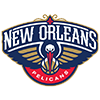 CJ McCollum, Pelicans
CJ McCollum, Pelicans
After spending the entirety of his career with the Trail Blazers, McCollum found himself on the trade block last season with Portland floundering amid an injury to Damian Lillard. After being dealt to the Pelicans, McCollum averaged 24.3 points, 4.5 rebounds, 5.8 assists, 1.3 steals and 2.7 three-pointers per game. It's likely that Zion Williamson's return this season could result in a decline in points and assists for McCollum, but he's still a reliable guard option in fantasy who can contribute in multiple areas. Playing alongside Lillard, he had six straight seasons in which he averaged at least 20.8 points, 3.2 rebounds and 3.0 assists per game.
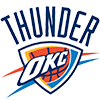 Josh Giddey, Thunder
Josh Giddey, Thunder
Despite taking managers through the rookie roller coaster of ups and downs, Giddey rounded into form toward the end of the season. In his 24 games after the New Year, he averaged 14.5 points on 45/28/78 shooting, 8.6 rebounds and 6.8 assists in 33.4 minutes. Giddey exhibited tremendous upside as a passer as a 19-year-old, though his 47.8 true shooting percentage was awful and tracked with the pre-draft concerns that he may never be a great scorer.
Giddey should make strides this season while sharing playmaking responsibilities with Shai Gilgeous-Alexander. His ceiling is only so high while sharing a team with someone as talented as Gilgeous-Alexander, but SGA's ability off the ball benefits Giddey's usage.
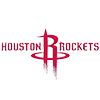 Jalen Green, Rockets
Jalen Green, Rockets
Green averaged 22.1 points (3.1 made threes), 3.8 boards and 4.2 assists after the All-Star break. The uber-athletic second-year talent should be given every opportunity to thrive on a rebuilding Rockets team full of youth, and he'll pair with Kevin Porter in the backcourt again. No. 3 overall pick Jabari Smith and intriguing center Alperen Sengun will also use their fair share of possessions, but Green should be the de facto top option.
 Tyrese Maxey, 76ers
Tyrese Maxey, 76ers
Maxey was one of the most notable breakout players of the 2021-22 season. Ben Simmons' absence before the trade deadline allowed Maxey to step in as the starting point guard, and his role remained stagnant after the Sixers dealt Simmons for James Harden. The 21st overall pick in the 2020 NBA Draft averaged 17.5 points, 4.3 assists and 3.2 rebounds in 35.3 minutes in his second NBA campaign.
His shooting efficiency was excellent, especially considering the considerable increase in role and his age (just 21), with the point guard slashing 49/43/87. Maxey's role will likely remain the same for this season, though fantasy managers can expect some improvement given his age.
TIER 4
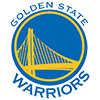 Klay Thompson, Warriors
Klay Thompson, Warriors
After a mulit-year injury layoff, Thompson required some time to shake off rust last season, and by the end of the regular season he only shot 42.9 percent from the field, breaking a streak of five straight campaigns in which he hit at least 46 percent of his attempts. In addition, he shot 38.5 percent from behind the arc, marking the first time he shot below 40 percent in that department in his career.
His inconsistent shooting continued in the playoffs, but the Warriors still managed to bring home another title. Thompson should improve his efficiency with an entire, healthy offseason to try and work his way back into form. Given that he averaged 20.4 points, 3.9 rebounds, 2.8 assists and 3.6 three-pointers even with his limitations last season, there is still plenty of fantasy appeal.
 Marcus Smart, Celtics
Marcus Smart, Celtics
In his first season functioning as Boston's primary point guard, Smart won Defensive Player of the Year (1.7 steals), dished a career-high 5.9 assists per game and helped the Celtics reach the NBA Finals. His role should remain mostly the same this season, though Boston brought in Malcolm Brogdon, who is expected to come off the bench but could cut into Smart's usage. Regardless, Smart has been a consistent fantasy performer over the past four years, finishing between 60th and 88th in per-game value, and he'll remain a core piece of the offensive gameplan.
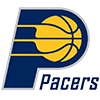 Buddy Hield, Pacers
Buddy Hield, Pacers
After joining the Pacers midway through the 2021-22 season, Hield finds himself in a very familiar situation. Despite the upheaval, Hield ended the season inside the top 100 of eight-category fantasy producers thanks to averages of 15.6 points, 4.4 rebounds, 2.8 assists, 0.9 steals and 3.2 three-pointers. Rumors continue to swirl regarding his availability as the Pacers enter a rebuild. Even if he's ultimately dealt to a deeper roster, Hield is a safe bet to be among the league-leaders in three-pointers made.
 Jordan Poole, Warriors
Jordan Poole, Warriors
The 2019 first-round pick showed some promise in his first two NBA campaigns, but he didn't put it all together until last year, when he finished with per-game averages of 18.5 points, 4.0 assists, 3.4 rebounds and 2.8 three-pointers while shooting 44.8 percent from the field and 92.5 percent from the charity stripe.
Golden State will, of course, hope that both Curry and Thompson can remain healthy next season, likely resulting in Poole playing primarily off the bench. The 23-year-old performed well as a reserve last season, but it's logical to expect that such a role will result in a dent in his overall production.
 Tyler Herro, Heat
Tyler Herro, Heat
Herro made significant strides in his third season, netting him the 2021-22 Sixth Man of the Year award. The 22-year-old averaged 20.7 points on 45/40/87 shooting, 5.0 rebounds and 4.0 assists in 32.6 minutes. Miami wasn't shy about leaning on him as the leader of the bench unit, as his 28.8 percent usage rate was 18th-highest in the NBA. With Jimmy Butler and Kyle Lowry aging and prone to rest days and injury, fantasy managers should feel confident targeting the young and rising Herro.
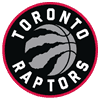 Gary Trent, Raptors
Gary Trent, Raptors
Trent has quietly become one of the better three-and-D guards in the NBA, averaging 3.0 threes and 1.7 steals. Managers in eight-category leagues who rostered Trent were rewarded with the 60th-best per-game fantasy production. Managers in nine-cat leagues also benefited from his extremely-low turnover rate (1.0 per game). The Duke product should hold nearly the exact same role this season. The Raptors didn't add any guards over the summer, with the biggest addition being forward Otto Porter.
TIER 5
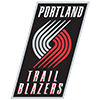 Anfernee Simons, Trail Blazers
Anfernee Simons, Trail Blazers
After three years of toiling in a bench role for the Trail Blazers, Simons finally graduated to a starting job midway through 2021-22 and took advantage of the opportunity, averaging 23.4 points, 5.8 assists and 2.7 rebounds over 35.5 minutes per game in a 27-game stretch before a knee injury prematurely ended his campaign. Simons' efforts earned him a four-year, $100 million contract extension this offseason and positioned him for a consistently large role heading into 2022-23
Simons should pair with Damian Lillard to form the team's primary backcourt. While he won't match his output with Lillard back, Simons should still see plenty of possessions with CJ McCollum out of the picture.
 Norman Powell, Clippers
Norman Powell, Clippers
Powell finds himself in a crowded Los Angeles wing rotation, but has upside as a microwave-scoring sixth man. He's connected on 41.0 percent of his triples across the last three seasons while averaging 17.9 points per game. Injuries or load management for Clippers stars Kawhi Leonard and Paul George is always on the table, which adds the potential for additional value to Powell's fantasy case.
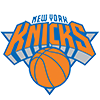 RJ Barrett, Knicks
RJ Barrett, Knicks
Thus far in his young career, Barrett has proven to be a better real-life player than fantasy commodity. While he cracked the 20-points-per-game mark for the first time last season, and he also hit a career-high 2.0 threes, his lack of efficiency and poor defensive numbers left him outside the top-190 in per-game value (8-cat).
The Duke product slashed a woeful 41/34/71, which translated to the NBA's 16th-worst true shooting percentage (51.1%) among 197 qualified players. His 0.6 steals and 0.2 blocks are also not helping his case. At this point, fantasy managers investing in Barrett are just hoping something clicks during the offseason or that the addition of a strong point guard in Jalen Brunson can help Barrett see cleaner looks.
 Derrick White, Celtics
Derrick White, Celtics
Last season, White was cruising through arguably his career-best season with the Spurs before a deadline deal shipped him to Boston. While White found himself in a winning situation, his role shifted from starter to reserve. In his 26 appearances with the Celtics, White averaged 11.0 points, 3.5 assists and 3.4 rebounds in 27.4 minutes. This offseason, Boston acquired Malcolm Brogdon, which will probably bump White's usage down even further.
TIER 6
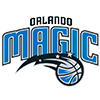 Jalen Suggs, Magic
Jalen Suggs, Magic
Suggs' rookie campaign was mostly disappointing. Injuries limited him to 48 games (45 starts) and his play when available was a mixed bag at best. The bad is obvious – his efficiency was awful, posting the worst true-shooting percentage (45.5%) in the league. However, there are signs that Suggs can have a strong sophomore season. He got to the free-throw line 3.4 times in his 26.9 minutes – a nice mark considering his overall workload and usage. Plus, his combined 1.8 steals-plus-blocks are a strong figure. Of course, much of that won't matter if he doesn't improve efficiency to adequate levels.
 Bennedict Mathurin, Pacers
Bennedict Mathurin, Pacers
The No. 6 overall pick in the 2022 NBA Draft, Mathurin is coming off of a stellar sophomore season at Arizona in which he cruised to Pac 12 Player of the Year honors. Mathurin projects to slide directly into the Pacers' starting lineup at shooting guard alongside Tyrese Haliburton and Buddy Hield. While he'll likely go through the usual rookie-guard ups and downs, Mathurin should play a ton of minutes and be a solid source of scoring and threes while chipping in some assists, rebounds and steals. If the Pacers were to trade Hield at some point, Mathurin would have even more upside.
 Caris LeVert, Cavaliers
Caris LeVert, Cavaliers
With the Pacers deciding to retool their roster, they shipped LeVert to the Cavaliers in the middle of last season. LeVert most struggled with his new squad, averaging 13.6 points, 3.4 rebounds and 3.9 assists. LeVert's role is up in the air heading into this season, especially with the uncertain status surrounding the possible return of Collin Sexton. There's some upside here, but LeVert's overall fantasy reputation is quite a bit lower now than it was this time last year.
 Alex Caruso, Bulls
Alex Caruso, Bulls
After coming over from Los Angeles in free agency, Caruso got off to a hot start and was among the league-leaders in steals early on. While a mid-season injury derailed his campaign and ultimately limited him to just 41 games, Caruso posted 4.0 assists, 3.6 rebounds, 1.7 steals and 1.0 threes per game while shooting nearly 80 percent from the free throw line. Fantasy managers shouldn't expect a much higher ceiling, but Caruso is a coveted source of steals who could play a larger role when the perpetually banged-up Lonzo Ball inevitably misses time.









